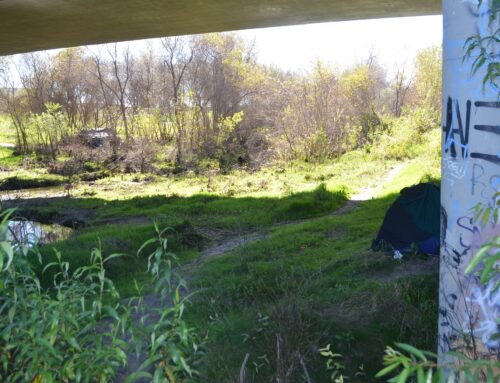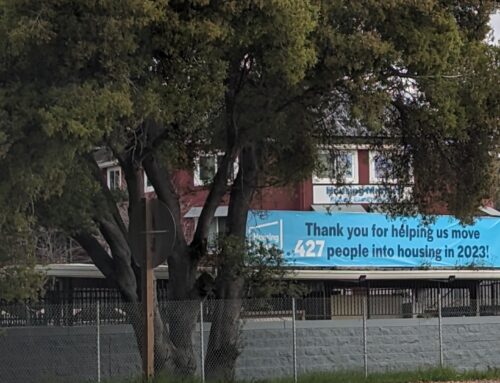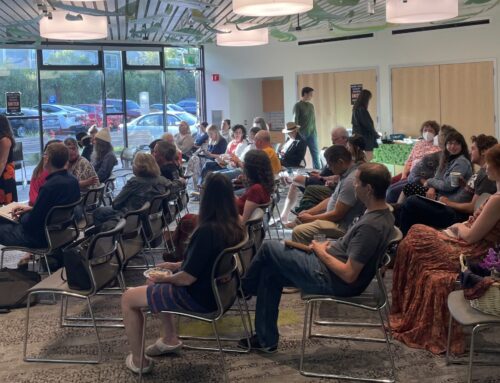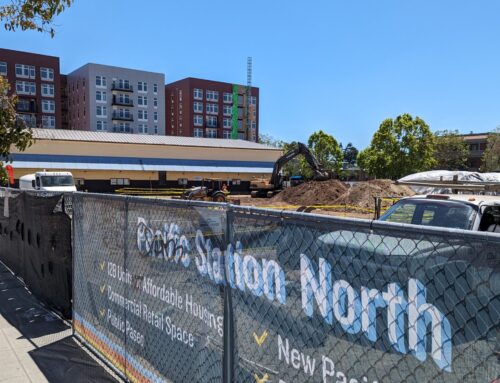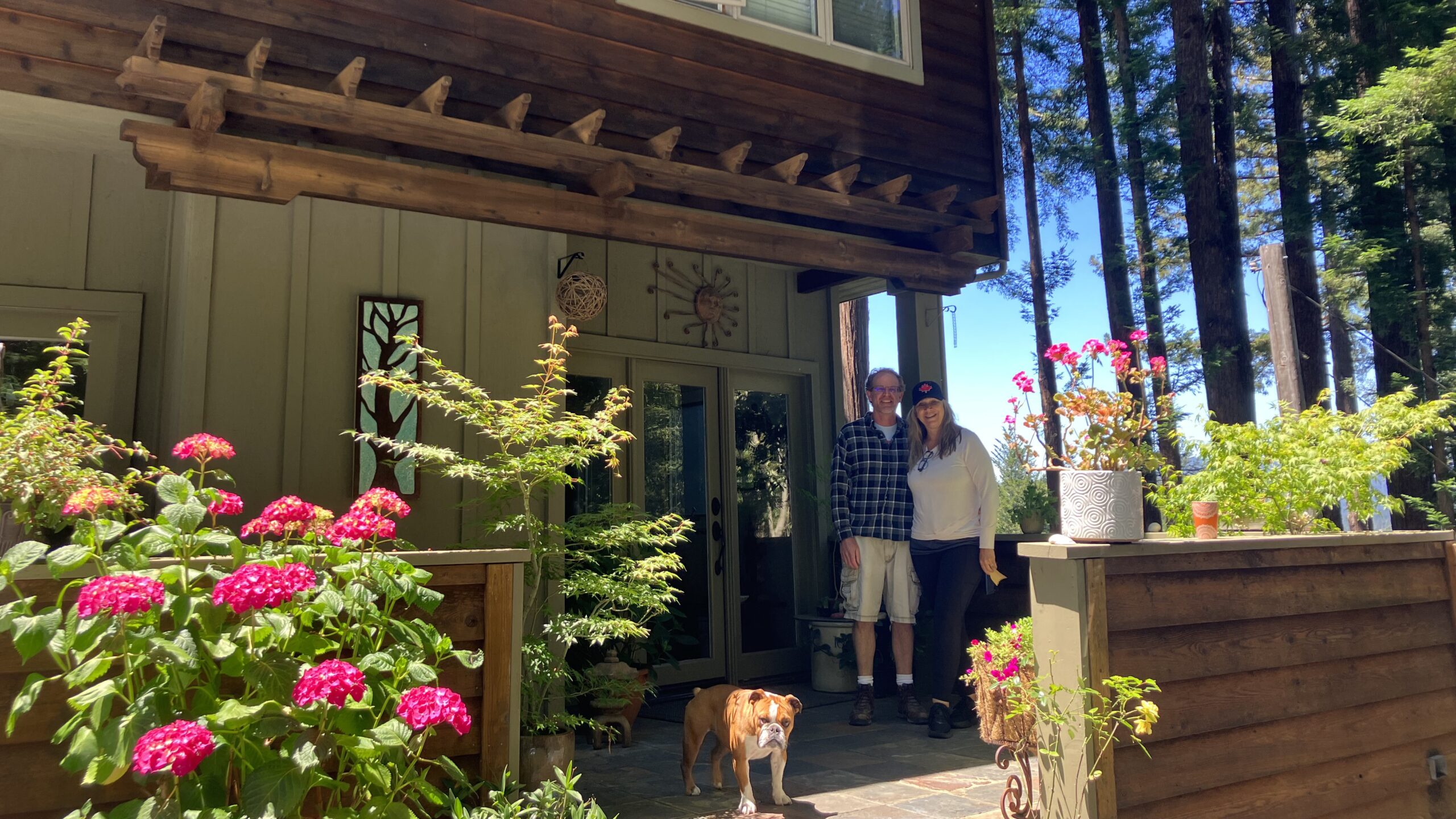
Roslyn Warriner and her husband, Albert, live off of Bean Creek Road in Scotts Valley. Their home insurance costs about $4,200 annually, more than double the cost from a previous insurer that did not renew their policy. (Michael Warren Mott — Santa Cruz Local)
SUMMIT >> Wildfires and floods in the Santa Cruz Mountains have not only upended the lives of thousands of residents in recent years, but they have also contributed to higher prices for homeowners insurance and caused some insurance providers to not renew coverage.
Advocates this month offered tips for rural Santa Cruz County homeowners to help navigate a new landscape of costlier home insurance offered from smaller providers. They also explained a last-resort homeowners insurance option from the state.
Fewer insurers
Homeowners insurance provides coverage to help repair or replace your home if it is damaged by a disaster like a fire. It also often provides coverage against theft, legal actions from injuries on a property or home damage from a person.
Wildfires and other disasters in California in recent years have meant that insurers have had to pay out policyholders more than in the past. By law, insurers must have enough money on hand to cover payouts, which is more difficult when several natural disasters occur in a single year.
In high-risk areas like those burned in the CZU Lightning Complex Fire in 2020, some major insurance companies have reduced or eliminated new homeowners insurance policies. State Farm stopped writing new insurance policies in California in late May and has not renewed some policies in the Santa Cruz Mountains this year. Allstate stopped writing new policies in the county last year, and Farmers Insurance started to limit new homeowners insurance policies here this month.
The situation has been particularly difficult for survivors of the CZU Fire, said Lynn Robinson, executive director of Valley Churches United. The nonprofit group has supported fire victims.
“Having this added experience of thinking you might not be able to get your home insured or how expensive it will be adds another burden for all these people who hadn’t anticipated [it] and can’t afford it,” Robinson said.
Homeowners insurance is not legally required, but most mortgage lenders mandate it. That has left some Santa Cruz County residents turning to smaller insurers that charge higher rates. There is also a fire insurance pool comprised of all insurers in California called the Fair Access to Insurance Requirements Plan, or FAIR Plan, that offers basic fire coverage for high-risk areas. State law established the FAIR plan for homeowners who cannot secure insurance from a traditional carrier.
“The FAIR plan is the insurance of last resort, but it’s not the end of the world. It’s better than no coverage,” Bach said.
State Assemblymember Gail Pellerin said the lack of homeowners insurance options and rate hikes are “on everybody’s mind.” Pellerin represents the 28th District, which includes San Lorenzo Valley, parts of the Santa Cruz Mountains, the North Coast and other areas.
“We hear it in the hallway, at meetings, from constituents,” Pellerin said of homeowners insurance problems. “Members of the legislature are in the same boat with our own homes. It’s very concerning,” she said.
To help rural Santa Cruz County homeowners understand the new landscape of homeowners insurance, Santa Cruz Local spoke with experts and residents to find answers to these common questions:
- My home insurance provider won’t renew my policy. What should I do?
- What if I can’t find a home insurance policy?
- What is the California FAIR plan for home insurance?
- How can I make my home insurance more affordable?
- How have other rural Santa Cruz County residents found new homeowners insurance?
- What if I’m renting or have an atypical housing situation?
- What else should I do to protect my home?
- How are state representatives trying to help Santa Cruz County residents with home insurance?
My home insurance provider won’t renew my policy. What should I do?
“If you get a non-renewal notice, you should have received it 75 days before the policy expires and we recommend shopping right away,” said Bach. “You may need that full period of time to get full coverage — so start shopping.”
If your insurance makes renewal contingent on home improvements to reduce fire risk, do those, Bach said. If you need financial help to do those, use the United Policyholders Wildfire Risk Reduction and Asset Protection WRAP Resource Center that includes grants and technical assistance.
“If your insurer says do the things, do the things and submit proof. Hopefully they will renew you,” Bach said.
It also might be worth asking for improvement steps even if you get a non-renewal notice. “You can ask them, ‘What do you need me to do to make you willing to insure me?’” said Valerie Brown, deputy executive director of United Policyholders. Brown also chairs Santa Cruz County’s Long-Term Recovery Group for CZU Fire survivors.
Once a new homeowners policy is offered, read the fine print.
Chris Copeland is a retired executive general adjuster and assistant vice president at the insurer Chubb & Son Inc. He worked there for 28 years. Copeland said he knew a couple who bought a home and allowed the mortgage company to buy their policy. The policy covered the loan and none of the contents of the home or their living expenses.
“They lost everything. They just didn’t pay attention,” Copeland said. “The loan was $400,000 and all of the $400,000 went to the mortgage company.”
Consider coverage for at least 80% your home’s value so you have enough money to rebuild or buy a new home, real estate agent Chris Clayton added.
Consumers can also use this video and these slides from United Policyholders for more tips on what to do if their homeowners policy was not renewed.
What if I can’t find a home insurance policy?
Be persistent and consider consulting an independent insurance broker.
“Independent brokers are brokers who aren’t beholden to one insurance company,” said Brown, of United Policyholders. “They are able to underwrite policies for multiple insurance companies.”
You can search online for independent brokers or use search tools made by the California Independent Insurance Agents and Brokers or the California Department of Insurance.
If you choose an insurer you haven’t heard of, learn about the different types of insurance companies.
“Standard admitted insurers have to follow consumer protection laws,” Brown said, while “non-admitted insurers are less regulated,” she said. “You need to make sure they are financially stable.”
Having a good relationship with your new insurance agent is also a plus, said local real estate agent Chris Clayton. “You need to find someone willing to work with you and explain it to you. It’s more important than ever,” Clayton said.
What is the California FAIR plan for home insurance?
The Fair Access to Insurance Requirements Plan, or FAIR Plan, offers basic fire insurance in high-risk areas. It is funded primarily by the policies it sells to consumers, and is financially backed by insurance companies that operate in California.
For many in the Santa Cruz Mountains, the FAIR Plan is the only option. There are different levels of coverage within it. A basic FAIR plan only covers damage caused by fire and lightning, an internal explosion, or smoke.
“It’s supposed to be temporary. if you don’t have options outside the FAIR Plan, let it be a temporary solution,” Bach said.
Homeowners should also make sure to get a “Difference in Conditions” policy, or DIC, which fills the gaps of what the FAIR Plan does not cover, Bach said.
She said that having both policies also might be unaffordable.
“This situation is brutal for a lot of low-income homeowners who went from paying $800 to $5,000 to $10,000 in premiums,” said Bach.
“The FAIR Plan is the way to go these days, really,” said Vanessa Ditz, an independent insurance agent at Cassidy Insurance Agency in Scotts Valley. “Right now it’s such a risk that [major insurers] don’t want to insure in these areas,” she said.
Ditz said she hoped the tight insurance market is temporary and that with wildfire risk management, things can improve.
How can I make my home insurance more affordable?
Combining your auto and home policies could also help save money. If your premium is too high, you might be able to increase your deductible.
You can also search your name and address on a consumer reporting agency website by requesting your Comprehensive Loss Underwriting Exchange report, or CLUE Report. The report shows the claim history at your home, like a credit report for your home once a year, Brown said. By checking the “request your consumer disclosure report,” you can access your CLUE report as well as real estate transaction and ownership data, records of liens, judgements, bankruptcies and other public records information.
“That has up to seven years of personal property history. And if you’re worried about cost, you might check to see if you have any errors on that,” Brown said.
Vanessa Ditz, a local independent insurance agent, said it also could be worth it to pay the higher rate from a major insurance carrier because it might not be offered again.
How have other rural Santa Cruz County residents found new homeowners insurance?
Several rural Santa Cruz County residents who were not CZU Fire survivors said they secured State Farm insurance policies on the last day they accepted new policies in California thanks to quick-thinking insurance agents.
Paul Booth, 68, lives off a winding, narrow driveway off Highway 17 with his wife, Columba. Grass grows on the south side of the hill they live on, and trees are on all other sides.
On a sunny July day, Booth was chainsawing trees downed from storms in February.
“I went through three insurance policies in three years, even back then. They do inspections and won’t like this or that, and cancel,” Booth said. “Then our rates started going up.”
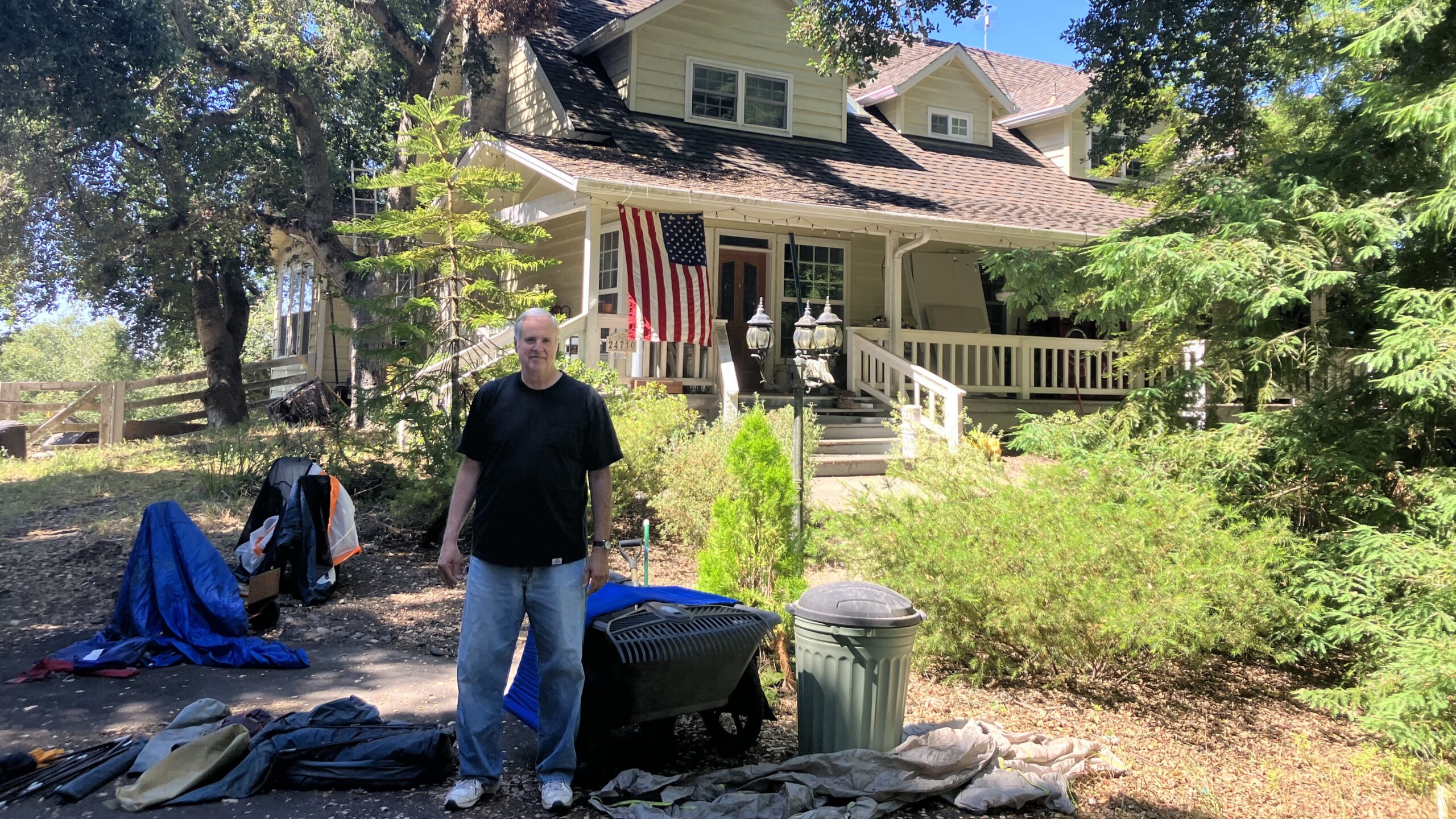
Paul Booth, who lives off Highway 17, said his home insurance was not renewed this year. He said he does not expect his new policy to last for more than a year. (Michael Warren Mott — Santa Cruz Local)
Booth said their insurance started at $1,200 a year in 2006, then rose to $3,000 a year. Then Columba found an agent in Santa Clara County who signed them up for a Farmers policy for $2,200 a year in 2009. They’ve had that policy for the past 14 years despite the rate’s climb to $5,700 a year.
A couple of months ago, Farmers told them they were canceling their policy that was due to be renewed this August because their area was considered high-fire risk, Booth said. He found insurance agent Lydia Harville on an email list for his neighborhood, and Harville was able to get him in on the last day State Farm was writing new policies. The new policy is $1,400 less than Farmers annually.
“I figure I have coverage for a year and they’ll figure out how to cancel it. At least I passed the first inspection,” Booth said with a chuckle. He said they might move homes if they have to get on the FAIR Plan and pay a lot more.
Roslyn Warriner lives in Scotts Valley. Her previous home was covered by AAA home insurance. When she and her husband Albert moved to their home on a hill in Scotts Valley, they were told AAA would cover them for auto insurance but not fire or home insurance in 2019. They then moved to American Modern Insurance Group, who did not renew them in 2021.
Warriner said she reached out to seven other companies but was denied. They found an agent who got them a State Farm policy at the last minute. Their annual rate is $4,200, up from $1,200 annually when she had AAA insurance.
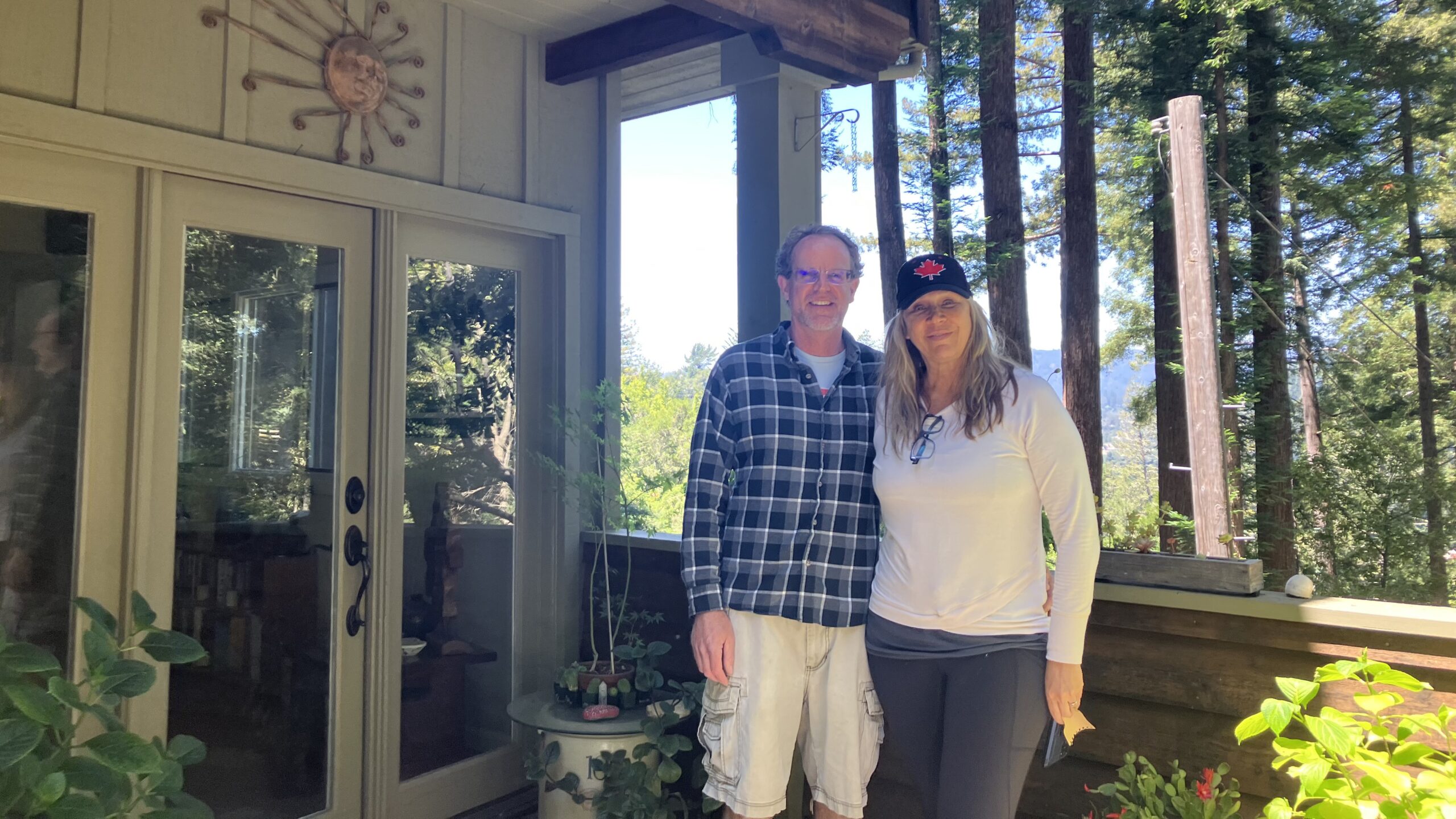
Homeowners insurance costs have risen for Roslyn Warriner and her husband, Albert, for their house in Scotts Valley. (Michael Warren Mott – Santa Cruz Local)
Another mountain resident reported paying $7,000 last year. When the plan was not renewed, they signed up for the state’s FAIR Plan at $16,000 annually.They have been trying to go back to private insurance, but haven’t been able to find a way to become Wildfire Prepared Home Plus-certified. A State Farm agent told them that certification would exempt them from being considered a high-fire risk home.
If you have a disaster, Copeland said to weigh heavily whether to use a public adjuster to help you with your claim, who typically ask for 10% of what is covered. “Think real hard before you do that,” Copeland said, “since that can end up being a lot of money.”
What if I’m renting or have an atypical housing situation?
If you are renting on someone else’s property or renting a room, renters insurance is key, Brown said.
“If you have a multigenerational family on your property, homeowners insurance only covers the owner, not family in different houses or renters,” Brown said.
“You’ve got a lot of people renting and in atypical living situations in a tiny home, trailer or [in-law] unit,” Brown said. “For those people, renters insurance is so inexpensive and the ability to be paid out for your contents and have additional living expenses, plus liability for living where you are, that is much better protection than banking on FEMA. You’re only going to get FEMA if the disaster is big enough,” Brown said.
You can start the process of signing up for renters insurance by speaking with an independent insurance broker, estimating the value of your belongings or reaching out to your car insurance company to see if they offer renters insurance.
What else should I do to protect my home?
Make an evacuation plan that includes backups of your court and insurance documents, Brown said.
Brown added it’s best to have a complete inventory of your belongings, even if it’s as simple as a video that shows all of it.
“One of the most painful things people grapple with after wildfire is completing inventory to be paid for those items,” Brown said. “Make an inventory so you can get paid for your items, then as time goes on, keep receipts.”
“Open up every drawer. Talk about the brands, what china you have, who made it, the brand name. Get that information and capture it,” she said. “Going forward, have a throwaway email address you send receipts to. They’re going to ask what you bought, how much and who you bought it from.”
Copeland, the former claims adjuster, started teaching free classes on how to get the most out of your insurance policy. One class at a Boulder Creek recreation center was attended by more than 30 people. The class quickly switched into strategies to fight insurance companies that had done wrong, he said.
How are state representatives trying to help Santa Cruz County residents with home insurance?
State Assemblymember Gail Pellerin said laws that govern insurance rates and catastrophe models, such as Proposition 103 from 1988, need to be reevaluated.
“There is no quick answer to this right now, it’s really getting the best minds in a room to come up with some reasonable solutions,” Pellerin said.
She said her office is in communication with the state’s Department of Insurance. It is also in close contact with the state assembly’s insurance committee and its select committee on wildfires that is holding hearings to do policy research and legislation around forestry management.
Pellerin signed on to a letter with other state representatives to support resolving homeowners insurance problems, considering California’s propensity for disasters and rising housing costs on the rise.
State Sen. John Laird, who represents Santa Cruz County and other areas, also has heard from residents frustrated with homeowners insurance.
“The senator has personally spoken with the Insurance Commissioner’s office to convey the difficulties faced by his constituents in obtaining insurance,” wrote Justin Tran, Laird’s press secretary, in an email. “The senator is committed to finding viable solutions to ensure that residents in the state and the 17th District have access to affordable insurance.
“If constituents require assistance in contacting the Department of Insurance, they are encouraged to reach out to our office at [email protected]. We are here to provide support and to facilitate their communication with the appropriate agency staff,” Tran wrote.
To contact Gail Pellerin, submit a form on her website or call her capitol office at 916-319-2028 or district office at 831-425-1503.
Clarification: Some homeowners insurance policy information was misattributed to Chris Copeland in an earlier version of this story.
Questions or comments? Email [email protected]. Santa Cruz Local is supported by members, major donors, sponsors and grants for the general support of our newsroom. Our news judgments are made independently and not on the basis of donor support. Learn more about Santa Cruz Local and how we are funded.
Michael Warren Mott is a graduate of UC Santa Cruz and Columbia University's School of Journalism. He has worked for newspapers across California.


